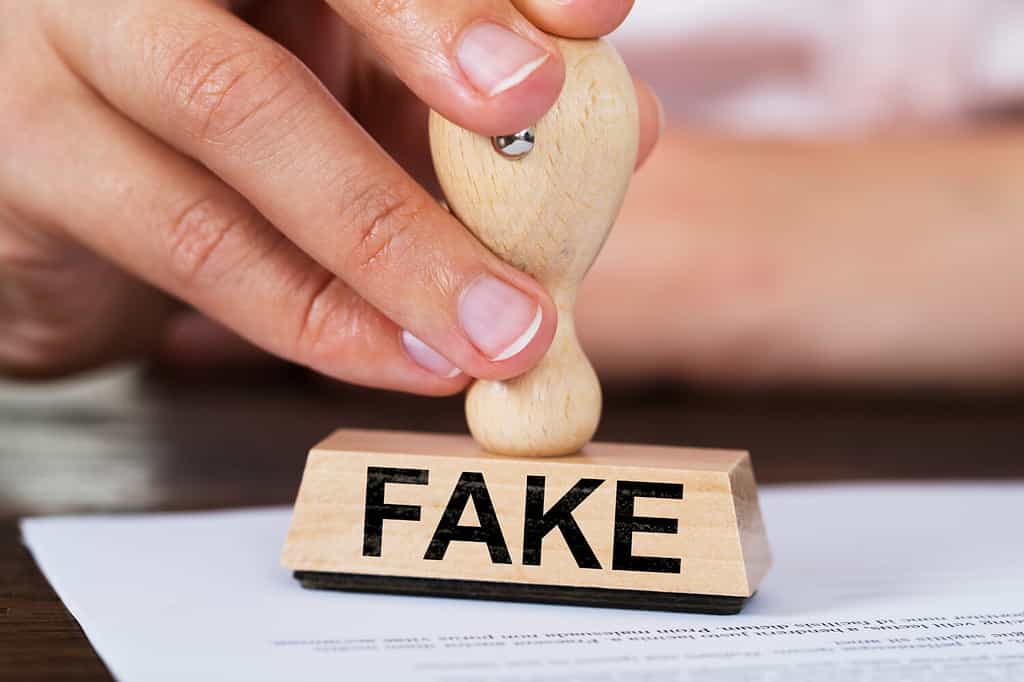You may have seen photos of a red dog that looks kind of like a mixture of bear, dog, and cat all in one. They’re incredibly cute–but are Red Cantonese Bear Dogs real?
Unfortunately, the Red Cantonese Bear Dog isn’t real. The photos floating around the internet are either edited or show different breeds. If you find someone selling this breed, they will end up giving you a different breed of puppy or not giving you a dog at all.
It’s important not to fall for these scams, both for your own financial safety and for the safety of the dogs who may be involved.
In this article, we’ll talk about whether the Red Cantonese Bear Dog is real or fake, how the rumors started, and how to avoid scams and unethical dog breeders.

The Red Cantonese Bear Dog is a fake breed that supposedly originated in China.
©Andrey_Popov/Shutterstock.com
What is the Red Cantonese Bear Dog?
The Red Cantonese Bear Dog is a fake breed that supposedly originated in China. It’s spoken of as a rare breed that’s not really seen in the United States.
Photos show dogs with red, fluffy fur. They have pointy ears and somewhat cat-like mouths. Sometimes these photos are faked, while other times they’re real photos of other breeds.
Is the Red Cantonese Bear Dog Real?
No, the Red Cantonese Bear Dog isn’t real. Rather, it’s a hoax that’s been spread around the internet using both real and fake photos. The fake photos are photoshopped and may combine features of various breeds.
Where Did the Rumors Originate?
The rumors originated in 2016, when a man was photographed with a red, fluffy dog in a Hong Kong airport. It’s unclear whether this was a different dog breed or if the photo itself was completely fake.
From there, rumors flew around the internet, with more people faking “photos” of the elusive Red Contonese Bear Dog.
Some people even appeared to cut other breeds’ fur into a similar style in order to fake photos of the breed.
Avoiding Unethical Breeders and Scams

Poor breeding practices lead to puppies who are poorly cared for at the beginning of life, and often have health or behavioral problems.
It’s important to avoid unethical breeders and scams to protect yourself and your wallet, but most importantly to protect the dogs being used in some of these schemes.
Poor breeding practices lead to puppies who are poorly cared for at the beginning of life, and often have health or behavioral problems that can lead to them being tossed from home to home or dying at a young age.
Breeders often neglect the parent dogs, especially the mothers, as they’re forced to birth one litter after another and may be kept in abusive conditions.
Even breeders who may mean well can do a lot of harm if they don’t know enough about how to breed and care for dogs properly.
So, how do you protect yourself and your future pup?
- Firstly, never buy a puppy online or from a pet store. Reputable breeders will sell to locals and will have you sign up for a waiting list before the puppies are born. They aren’t leaving their dogs in pet stores or waiting until the last minute to find them homes.
- Research the breed thoroughly. Even if you’re adopting a real breed, you need to know about their care, lifespan, and what health or behavioral problems you should expect to see.
- Choose a dog who fits your lifestyle, rather than selecting for rarity or looks. At the end of the day, how rare your dog’s breed is doesn’t matter. Look at what’s important, such as grooming requirements, how active the breed is, and the dog’s temperament.
- Check the American Kennel Club (AKC) website. Not all real breeds are listed, but if the breed is there then you’ll know it’s real. But, please remember that the AKC listing a breed doesn’t mean it’s ethically bred. Their breed standards are actually the cause of some poor breeding practices!
Unethical Breeders
- Avoid those who breed large-scale. Once you get beyond a couple of litters, it becomes impossible to raise so many puppies at once if you’re doing it the right way. Those who breed several breeds are a red flag for similar reasons–they likely don’t take the time to learn about the breed, which is necessary in order to breed ethically.
- Meet the parent dogs and ask for proof of ancestry. Reputable breeders can trace their dogs’ ancestry back several generations. They also have no problem showing you the parents (or mother, if she’s the only one in their home).
They should look like their puppies, and should also appear healthy, clean, and relaxed around the breeder. - Meet in the breeder’s home. You should be able to see where the dogs are living. The environment should be clean with plenty of space (meaning, the dogs shouldn’t be kept in crates for most of their lives).
Other Things to Ask For
- Ask for veterinary records and proof of genetic health testing. Remember that health testing isn’t a simple check-up; it means testing the parent dogs for genetic illnesses. Even some healthy dogs can pass down awful health problems if bred.
- Sign up for a wait list. I know waiting isn’t fun! But, reputable breeders will always have one. If someone can give you a puppy today, they’re most likely not an ethical breeder.
- Ask questions–especially if you already know the answer. This is how you know a breeder is knowledgeable about dogs and breeding, and is breeding ethically. Run from those who answer dishonestly or incorrectly to questions about their breed.
- Avoid dogs that can’t be bred ethically. This includes those with short snouts, like Pugs and Chow Chows, and those with long backs and short legs, like Dachshunds and Corgis. Breeders purposefully breed these dogs with inherent health problems.
- Avoid impulse purchases. Adopting a dog is a commitment to take care of them for as long as they live. Caring for them requires time, effort, and money.
Similar Breeds to the Red Cantonese Bear Dog
If you love the look of the Red Cantonese Bear Dog, there are similar breeds out there! Just remember to also look into their temperaments and care requirements, as a breed being cute doesn’t necessarily mean it’s the right breed for you.

If you love the look of the Red Cantonese Bear Dog, there are similar breeds out there!
©Tatyana Kuznetsova/Shutterstock.com
Chow Chow
This is a very real breed, but also a very unhealthy one. Their short snouts make breathing and exercise difficult. I recommend rescue-only for these pups, as they aren’t ethically bred.
It’s also worth noting that Chow Chows aren’t typically the best dogs for first-time dog guardians, as they can be stubborn, have strong guarding instincts, and may be dog aggressive.
Some people think Chows are used in the fake photos of Cantonese Bear Dogs, but the fake breed has a longer snout–which would likely make this theoretical breed healthier than Chows were it real!
Shiba Inu
Shiba Inus look very similar to many of the Red Cantonese Bear Dog photos. They have red coats, pointy ears, and long snouts.
Akita
Red Akitas have the same broad stature, pointy ears, and long snouts as their fake counterparts. Like Chows, they aren’t recommended for first-time dog guardians.
Pomeranian
Pomeranians have longer coats and shorter snouts than Cantonese Bear Dogs, but their shorts aren’t typically short enough to be considered brachycephalic. It’s important to find a breeder who breeds for longer snouts, rather than shorter ones, as the breed is on the cusp of this label and all of the health problems that come with it.
What you might like in a Pomeranian over the above breeds is that they’re small, weighing just 3-7 pounds. They have fluffy red fur, cute upright ears, and curled tails.
About Mixed Breeds
I recommend avoiding the purchase of mixed breeds from breeders, as they’re almost never bred ethically. Most of these breeders are classified as backyard breeders as they don’t have the knowledge (or sometimes the willingness) to breed ethically.
These breeders will often use clever marketing schemes to get people to buy their puppies. For instance, they might try to sell “mini Chow Chows” rather than marketing their dogs as mixed-breeds, as this makes selling puppies easier.
Of course, if you’d like to rescue a dog, you can likely find the above breeds and mixed breeds at the shelter that look similar to the Red Cantonese Bear Dog. This is the best way to adopt a mixed breed so that you don’t support unethical breeding practices.
Ready to discover the top 10 cutest dog breeds in the entire world?
How about the fastest dogs, the largest dogs and those that are -- quite frankly -- just the kindest dogs on the planet? Each day, AZ Animals sends out lists just like this to our thousands of email subscribers. And the best part? It's FREE. Join today by entering your email below.
Thank you for reading! Have some feedback for us? Contact the AZ Animals editorial team.








